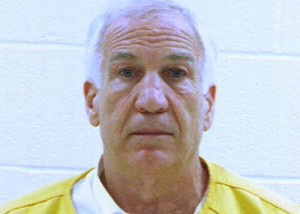
By Ruth Ferguson, NDG Editor
An independent investigation has officially concluded what many suspected: officials at Penn State actively sought to conceal what they knew related to allegations that ex-assistant football coach Jerry Sandusky was sexually abusing boys. Why? Because they valued the school’s reputation above the horror suffered and the damage to those children is the primary determination of the internal independent investigation.
The report released this morning by Freeh Sporkin & Sullivan LLP, the firm hired by the institution 10 days after the allegations against Sandusky became public last year on November 11, 2011.
When hired, the investigating team was tasked with two primary areas of focus:
- The alleged failure of Pennsylvania State University personnel to respond to, and report to the appropriate authorities, the sexual abuse of children by former University football coach Gerald A. Sandusky (“Sandusky”);
- The circumstances under which such abuse could occur in University facilities or under the auspices of University programs for youth.
“Four of the most powerful people at The Pennsylvania State University – President Graham B. Spanier, Senior Vice President‐Finance and Business Gary C. Schultz, Athletic Director Timothy M. Curley and Head Football Coach Joseph V. Paterno – failed to protect against a child sexual predator harming children for over a decade. These men concealed Sandusky’s activities from the Board of Trustees, the University community and authorities.“
According to the report, the men were aware of a criminal investigation regarding an allegation of abuse in May, 1998. Paterno reportedly followed it closely, but took no action, not even alerting other staff members so they could at least ensure Sandusky did not bring other children to the campus, a frequent site of his abusive behavior. At a press conference on Thursday morning, former FBI Director Louis Freeh, who led the investigation had nice words about the legacy of Coach Paterno but indicated that he could have put an end of the abuse, “if he so wished.” According to the report, Paterno and school officials did not even confront Sandusky about the allegations.
Michael McQueary, then a football assistant coach for the school, testified for the prosecution during the recent trial that he saw Sandusky with a young boy in the showers on February 9, 2001 and notified officials. It appears they did plan to notify authorities, but a memo discovered during the independent investigation shows Curley and Paterno talked and they changed the plan. Curley recommended to Spanier and Schultz to offer “professional help” to Sandusky; notify the Second Mile, the organization he was using to gain access to his victims; and that as long as Sandusky was cooperative they would not notify the Department of Public Welfare.
The report concludes:
“They exhibited a striking lack of empathy for Sandusky’s victims by failing to inquire as to their safety and well‐being, especially by not attempting to determine the identity of the child who Sandusky assaulted in the Lasch Building in 2001. Further, they exposed this child to additional harm by alerting Sandusky, who was the only one who knew the child’s identity, of what McQueary saw in the shower on the night of February 9, 2001.”
To date the identify of the young boy, estimated to be about the age of 10, remains unknown.
Curley and Schultz are currently under investigation by a state grand jury and are facing a trial related to charges of perjury regarding their involvement in the cover-up of Sandusky’s activities. Joe Paterno, fired by the school, was never interviewed by the investigators prior to his death in January from lung cancer.
Sandusky is currently in jail awaiting sentencing following his conviction last month on 45 of 48 counts of sexually abusing 10 boys.
The implications for the university are tremendous. The school will likely face lawsuits from the victims, but:
- The National Collegiate Athletic Association (NCAA) is looking into the matter. If Southern Methodist University’s (SMU) football program can get the death penalty in the 1980s for violations of rules, the public is interested to see how the NCAA will handle these serious allegations.
- The Department of Education launched an investigation last fall when the allegations came to light. They are seeking to determine if the school failed to satisfy the federal requirements to report and respond to crimes committed at the university.
To read more about the report visit USA Today.




